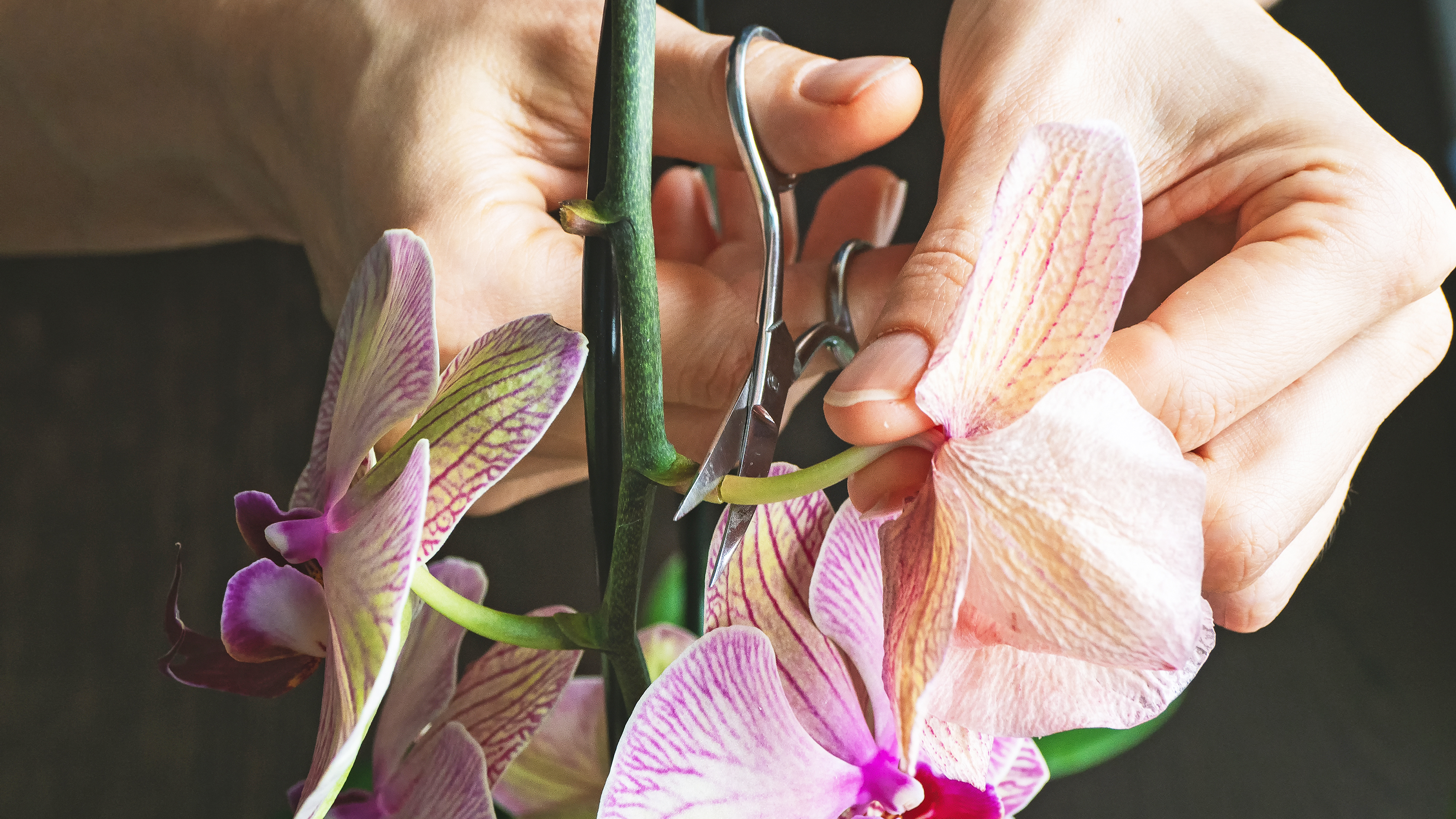When To Cut Orchid Plants: Learn How To Prune An Orchid
Orchids are beautiful flowers that are great for growing indoors. Follow the steps in this article to properly prune your orchid plants.

Orchids are beautiful flowers that are great for growing indoors. While these little plants are fairly easy to look after, special care must be taken when pruning orchids. Follow these steps to properly prune off old wood to make room for new blooms.
How to Prune an Orchid
Different types of orchids require different pruning methods. Use the orchid pruning tips below to keep your orchids looking good and healthy.
Phalaenopsis Orchid
Make sure you have super sharp pruning shears to use on your orchid. The sharper the shears, the cleaner the cut will be. A clean cut makes for a healthier orchid.
- While the orchid is still blooming, cut back the flowers that are fading. Removing the orchid blooms that have finished will not only keep your plant looking neat but will increase its vitality.
- Make a clean, even cut directly back to the main branch. Keep this up while the plant is blooming.
- When the Phalaenopsis orchid is completely done blooming and all the flowers have faded, you can do the major pruning. Most orchids will go dormant in the fall, so plan on doing your pruning then.
- Trim the stem that had the blooms on it off about an inch (2.5 cm.) away from the main stalk. Make the cut clean and even. If there are any places on the stalk that have turned yellow or brown, cut them back completely so that the plant will grow back healthier.
- Remove the orchid from its pot. Prune away any dead or damaged roots.
- Replant the orchid in a bigger pot each year so that it has more room to grow.
Young Orchids
If your orchid is fairly young, you want to encourage it to grow bigger roots and blooms. The best way to cut orchid plants when they are young is to trim the stalk all the way back to 1 inch (2.5 cm.) from the base of the plant. As it grows back, it will have stronger roots, bigger leaves, and larger blooms.
Dendrobium Orchid
If your orchid is a Dendrobium type, trimming is a little different. Trim the flowers off as they fade but leave the stem. Next year it will flower on the same stalk. Trim roots and re-pot as normal.
More Orchid Pruning Tips
Make sure your plant is near a window for the best lighting. Plants that do not receive enough light will not be as healthy as those that receive sufficient light. The most common problem with not enough light is lack of blooming or quality blooms.
Water your plant carefully. Try to never wet the leaves of an orchid when you water it. If you do, dry the leaves with a paper towel so that no water is left sitting on them. Don't allow excess water to sit at the base of the plant.
Gardening tips, videos, info and more delivered right to your inbox!
Sign up for the Gardening Know How newsletter today and receive a free copy of our e-book "How to Grow Delicious Tomatoes".
Water that is not allowed to drain away from the pot will cause the roots to rot and possibly kill the plant. Watering too frequently will also cause this.
In the summer, water orchids once a week. In the winter, once every two weeks is sufficient.
-
 4 Superfast Composting Methods: Turn Waste Into Garden Gold In 30 Days Or Less
4 Superfast Composting Methods: Turn Waste Into Garden Gold In 30 Days Or LessTry the fastest composting methods to turbocharge your pile and transform kitchen scraps and garden waste into finished compost in just a few weeks.
By Mary Ellen Ellis
-
 Best Spider Plant Soil – Complete Soil Guide And Expert Tips For Keeping Plants Happy
Best Spider Plant Soil – Complete Soil Guide And Expert Tips For Keeping Plants HappySpider plants are fun and easy plants to grow, but what is the best soil for a spider plant? Selecting the right soil is important so they can thrive.
By Bonnie L. Grant